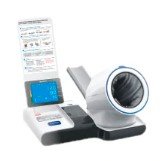Ensuring Compatibility and Reliability of Wearables in Medical Labs
Summary
- Ensuring compatibility and reliability of wearables in medical labs is crucial for accurate phlebotomy data collection.
- Medical labs can establish protocols for testing the compatibility and reliability of wearables before integrating them into the phlebotomy process.
- Regular maintenance and calibration of wearables can also help enhance their accuracy and reliability in collecting phlebotomy data.
Introduction
With the advancement of technology, wearables have become increasingly popular in the healthcare industry. These devices can track various health metrics, including heart rate, blood pressure, and oxygen saturation. In the context of medical labs and phlebotomy, wearables can play a crucial role in collecting data for analysis and diagnosis. However, ensuring the compatibility and reliability of wearables is essential to obtain accurate and consistent results.
Establishing Compatibility and Reliability
Medical labs must establish protocols to test the compatibility and reliability of wearables before incorporating them into the phlebotomy process. Here are some steps labs can take to ensure compatibility and reliability:
1. Conducting Compatibility Tests
- Before using a wearable device for phlebotomy data collection, labs should conduct compatibility tests to ensure that the device can accurately measure and transmit data.
- Testing the device with different types of Phlebotomy Equipment and software to check for any compatibility issues.
2. Establishing Data Transmission Protocols
- Setting up secure and reliable data transmission protocols to ensure that phlebotomy data collected by wearables is transmitted accurately and securely to the lab's systems.
- Regularly monitoring data transmission to identify any issues and address them promptly.
3. Ensuring Data Accuracy
- Calibrating wearables regularly to ensure the accuracy of data collected during phlebotomy procedures.
- Establishing protocols for validating the accuracy of wearable devices against traditional phlebotomy methods to ensure consistency and reliability.
Maintaining Accuracy and Reliability
In addition to testing compatibility and establishing protocols, medical labs can maintain the accuracy and reliability of wearables by following these practices:
1. Regular Maintenance
- Performing regular maintenance checks on wearables to ensure that they are functioning properly and accurately.
- Replacing worn-out components or upgrading firmware to enhance the performance of wearables in collecting phlebotomy data.
2. Data Quality Assurance
- Implementing data quality assurance measures to verify the accuracy and reliability of phlebotomy data collected by wearables.
- Conducting periodic audits and reviews of data collected by wearables to identify any Discrepancies and take corrective action.
3. Continuous Training and Education
- Providing ongoing training and education for lab technicians on the proper use of wearables in phlebotomy procedures.
- Ensuring that technicians are knowledgeable about the capabilities and limitations of wearables to maximize their effectiveness in collecting phlebotomy data.
Conclusion
Ensuring the compatibility and reliability of wearables in medical labs is essential for accurate phlebotomy data collection. By following established protocols, conducting tests, and maintaining wearables regularly, labs can enhance the accuracy and reliability of data collected during phlebotomy procedures. Continuous training and education for lab technicians can further improve the integration of wearables into the phlebotomy process, ultimately leading to more efficient and effective patient care.

Disclaimer: The content provided on this blog is for informational purposes only, reflecting the personal opinions and insights of the author(s) on the topics. The information provided should not be used for diagnosing or treating a health problem or disease, and those seeking personal medical advice should consult with a licensed physician. Always seek the advice of your doctor or other qualified health provider regarding a medical condition. Never disregard professional medical advice or delay in seeking it because of something you have read on this website. If you think you may have a medical emergency, call 911 or go to the nearest emergency room immediately. No physician-patient relationship is created by this web site or its use. No contributors to this web site make any representations, express or implied, with respect to the information provided herein or to its use. While we strive to share accurate and up-to-date information, we cannot guarantee the completeness, reliability, or accuracy of the content. The blog may also include links to external websites and resources for the convenience of our readers. Please note that linking to other sites does not imply endorsement of their content, practices, or services by us. Readers should use their discretion and judgment while exploring any external links and resources mentioned on this blog.
